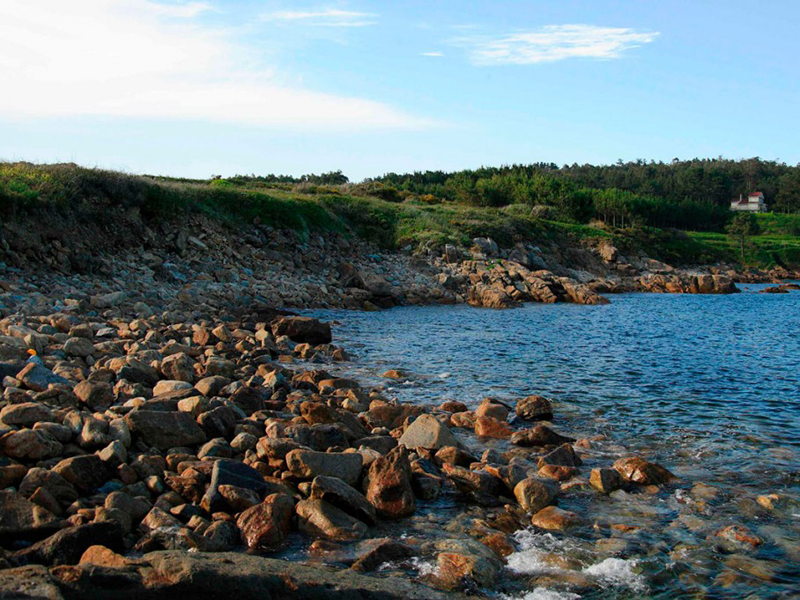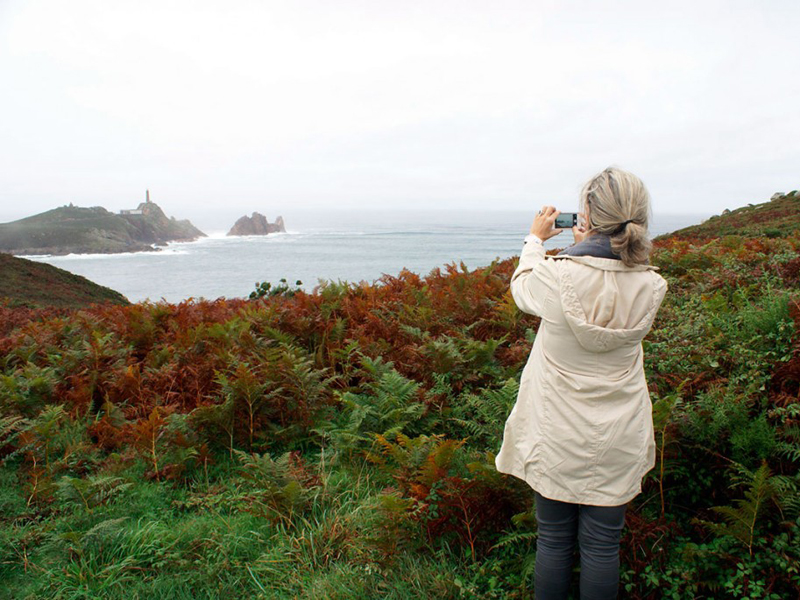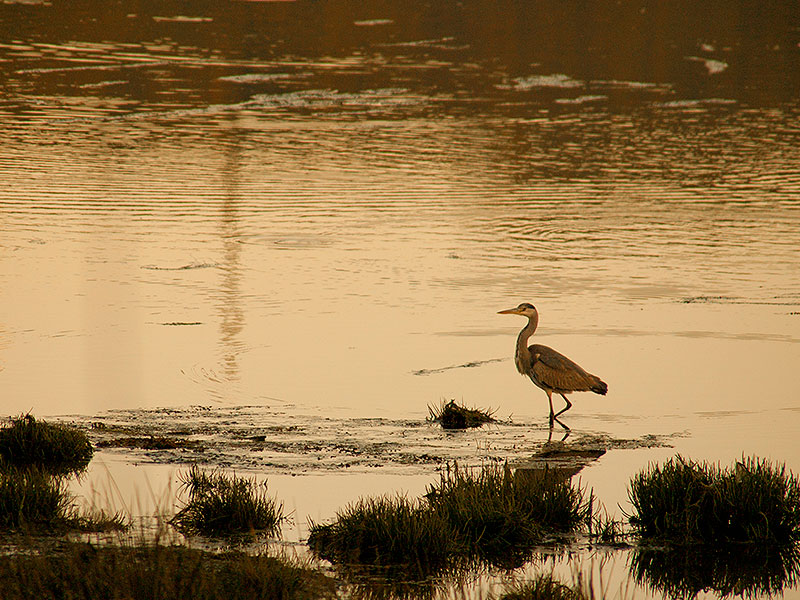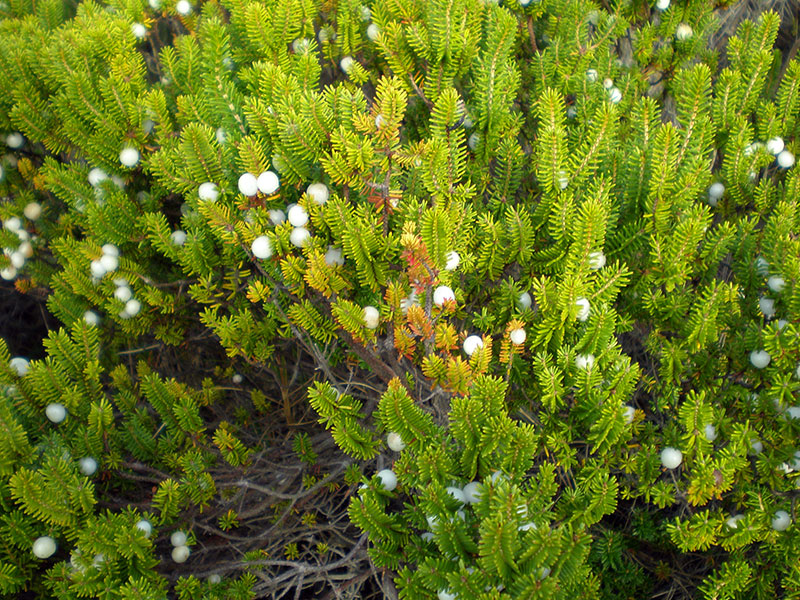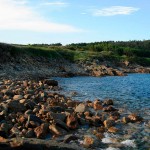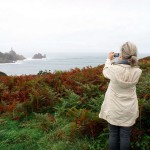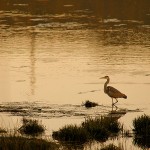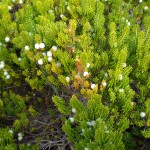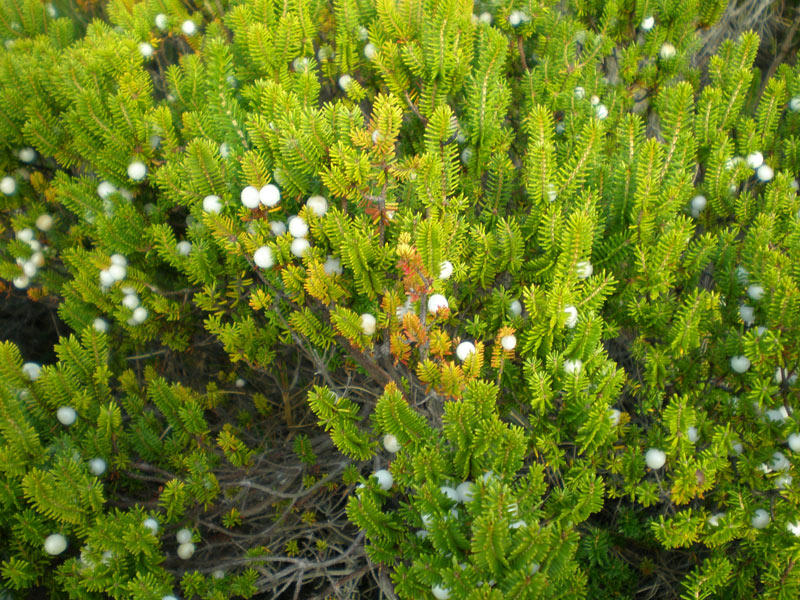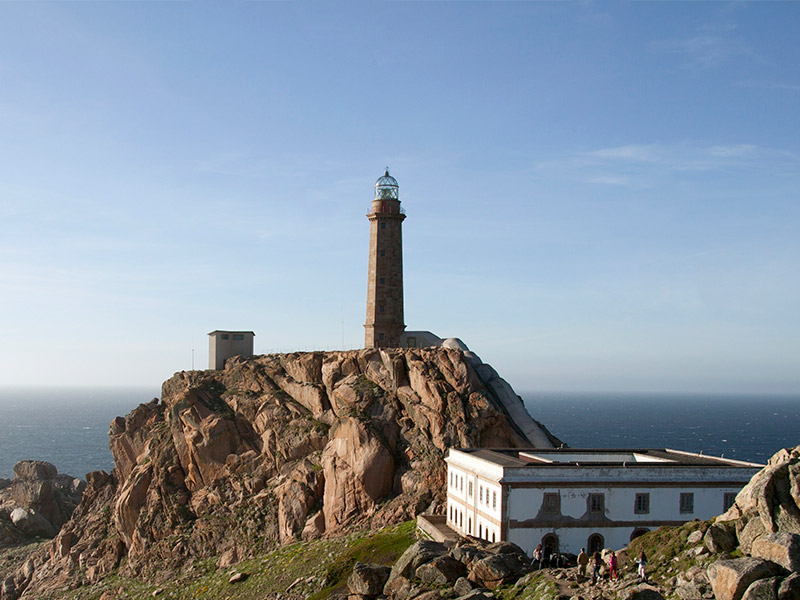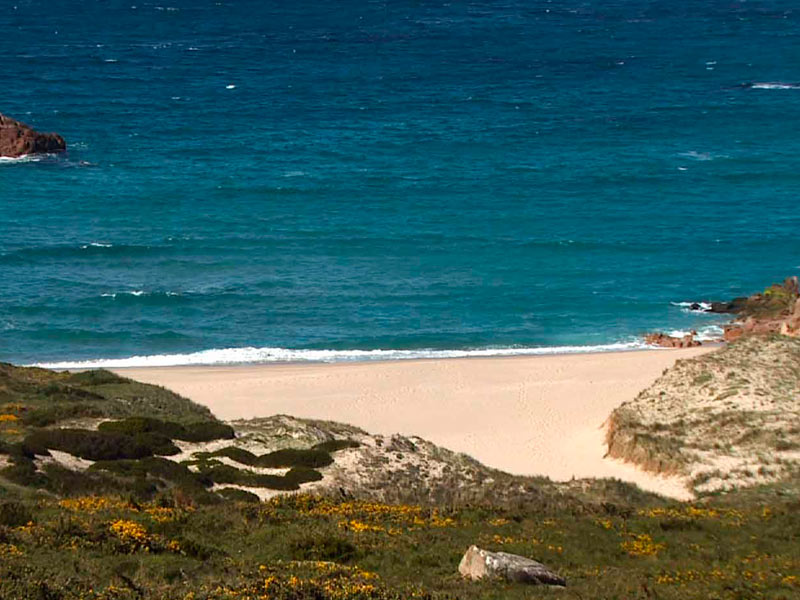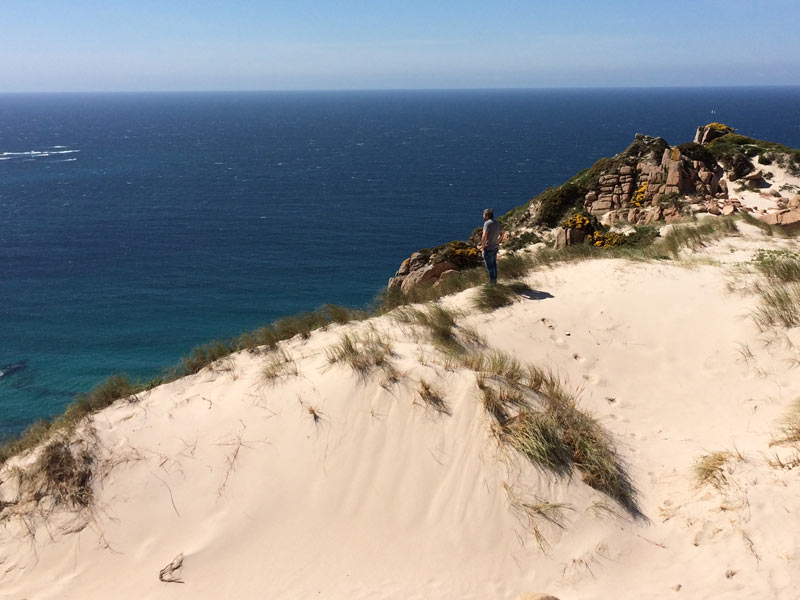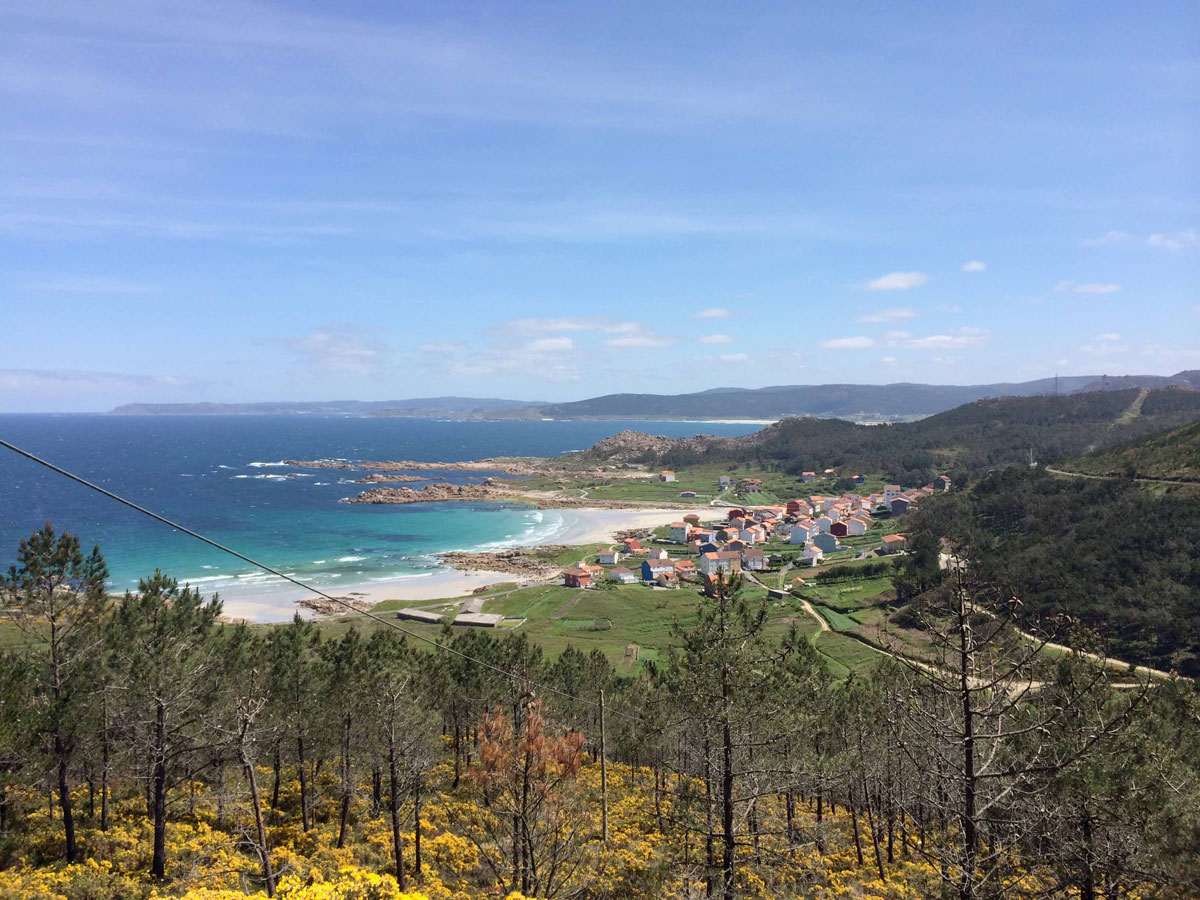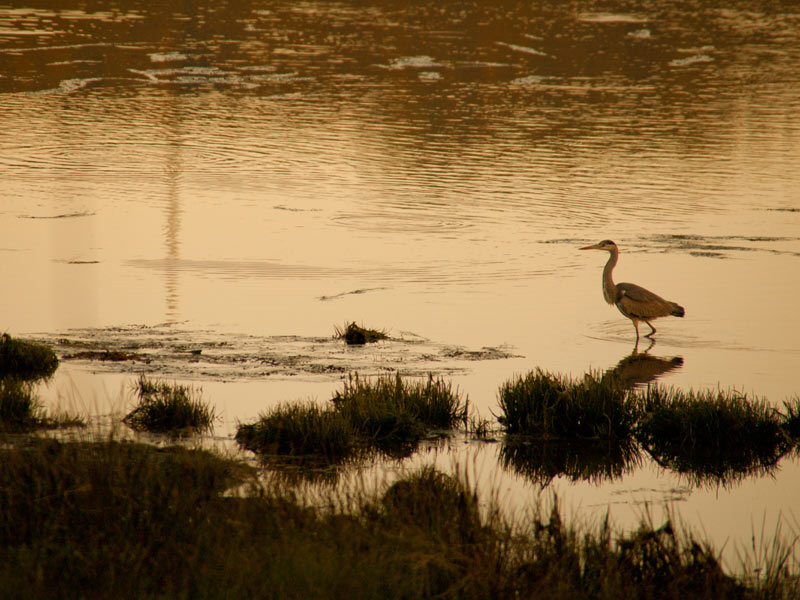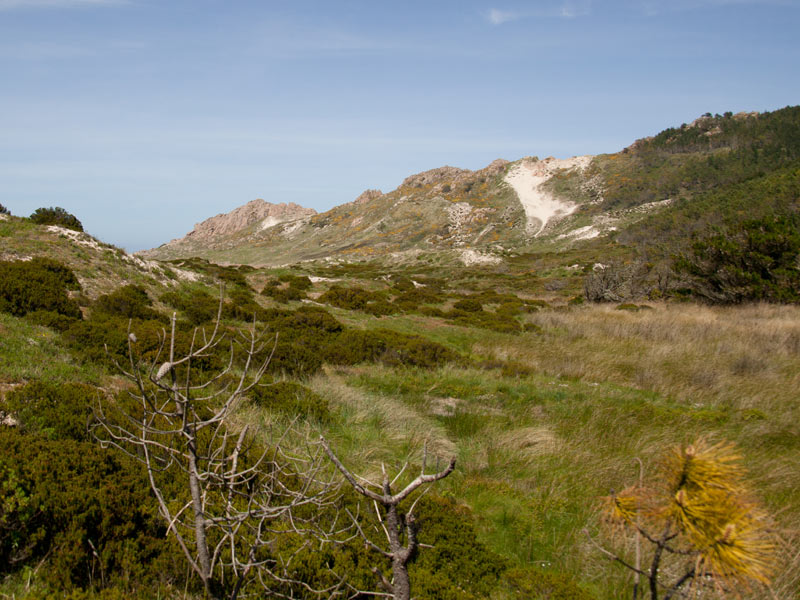Much of the coast is part of the Costa da Morte Site of Community Interest (SCI), part of the Natura 2000 Network. This is so because we have major marine ecosystems and a very diverse flora and fauna.
As for the flora, the vegetation is varied and in good health. In the rocky cliffs and coastal flatlands, we have native sea thrifts and sea fennels. On higher ground, there are low shrubs such as the common gorse. Around the beaches and dunes are rare native plants such as the caramiña (Corema album).
As for the fauna, the ria is home to a number of seabird species. They nest in the islets around Cape Vilán. In Vilán de Fóra we find endangered species such as the black-legged kittiwake, the European storm petrel and the European shag, and Spain’s only colonies of common guillemot.
All along our coast there are a lot of small capes and gulfs, with rocky cliffs, islets and also the Cape Vilán. From the north, the cape protects the Camariñas ria. Our ria is different to the neighbouring ones: it is smaller, more sheltered, and has soft edges. Going towards the inner regions, up until the mouth of the Grande river, in Ponte do Porto, the influence of the sea starts to blur. This area, where the Grande river waters meet the Atlantic Ocean, is called the Porto ria.
